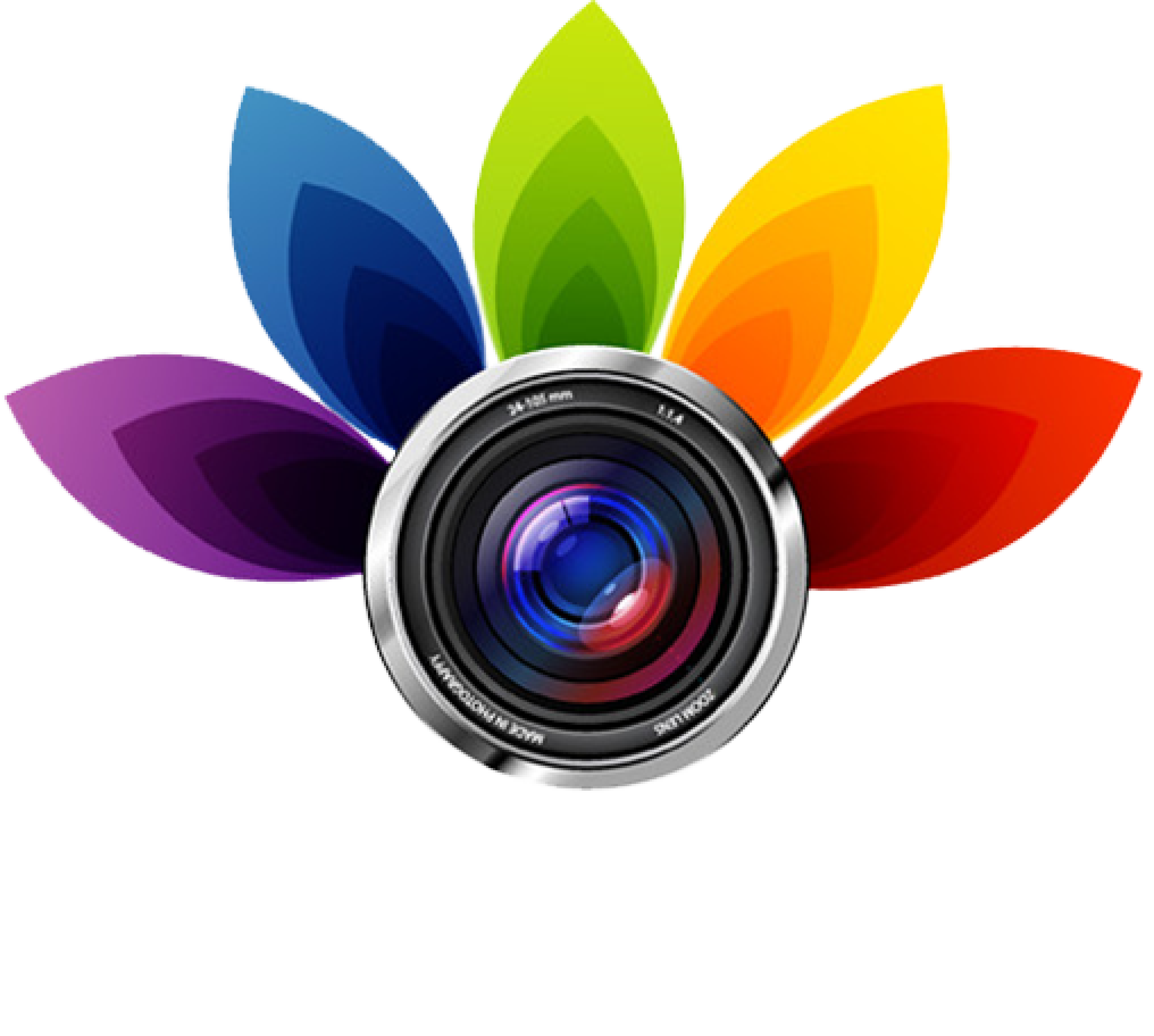
Top 10 Things Manual Editors Do Better Than AI Tools
When it comes to photo editing, manual editors still hold a special place in the process. While AI tools are fast and can handle basic edits, they often miss the finer details that take a photo truly stand out. Manual editors have the skill and experience to adjust colors, fix imperfections, and bring out the personality in every image. They carefully review each photo, making choices that match the client’s vision. For projects that need precision and creativity, nothing beats a human touch.
AI tools are helpful, but they have limits. They might smooth skin too much, alter colors unnaturally, or miss small objects that need correction. Manual editors notice these things and can fix them with care and accuracy. They can also make artistic decisions that AI cannot understand, giving photos a more natural and appealing look. In this list, we’ll explore the top 10 things Manual editors do better than AI tools and why their work remains important in photo editing.
Manual Editors Give Every Photo a Personal Touch
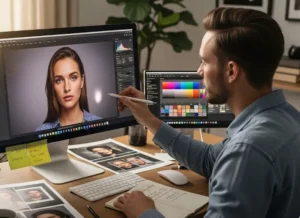 Manual editors bring a personal touch to every photo they work on, something AI tools often struggle to replicate. They carefully study each image and make decisions based on what looks best, rather than following automatic rules. This attention make sure that every photo matches the client’s vision and feels natural. Human editors notice soft details like the mood of the photo, facial expressions, or small background elements that can change the whole feel of an image.
Manual editors bring a personal touch to every photo they work on, something AI tools often struggle to replicate. They carefully study each image and make decisions based on what looks best, rather than following automatic rules. This attention make sure that every photo matches the client’s vision and feels natural. Human editors notice soft details like the mood of the photo, facial expressions, or small background elements that can change the whole feel of an image.
Their approach makes each picture unique and more appealing to viewers. Working with manual editors also allows flexibility and creativity. They can adjust their techniques depending on the type of photo, lighting, or style requested. Unlike AI, they can make judgment calls that reflect artistic taste and real-world context.
Here are some tips for readers :
- Always review photos after initial edits to see if details need fine-tuning.
- Communicate your style preferences clearly to get the best results.
- Don’t rely solely on automated tools for important projects; consider a human touch for critical photos.
They Fix Colors with Real Accuracy
Manual editors are experts at fixing colors with real accuracy, which makes photos look more natural and appealing. Unlike AI tools that apply automatic adjustments, manual editors carefully evaluate each photo and adjust colors to match the actual scene or desired style. They balance highlights, shadows, and tones to make the photo doesn’t look overexposed or dull. This attention to detail makes sure that skin tones, landscapes, or product colors appear true to life. By making these precise adjustments, they create images that feel authentic and visually pleasing.
Color correction also requires understanding the mood and purpose of the photo. Manual editors can make small changes that improve the story behind the image without making it look artificial.
Here are some helpful tips to improve your editing:
- Compare your edited photo to the original to avoid overdoing colors.
- Use reference images when matching specific color styles.
- Always adjust white balance first to keep colors consistent.
Manual Editors Perfect Skin and Textures
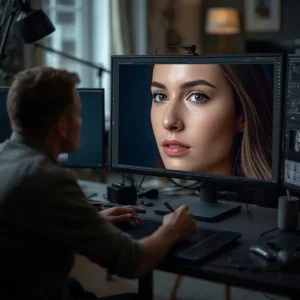 Manual editors excel at perfecting skin and textures in a way that looks natural. While AI tools can smooth skin quickly, they often overdo it, making faces look flat or fake. Manual editors carefully remove blemishes, wrinkles, or spots while keeping the skin’s natural texture intact. They pay attention to details like pores, hair, and fine lines, making sure the result still feels real. This careful approach assures that portraits, fashion photos, or close-ups look polished without losing authenticity. Perfect textures are not just about skin.
Manual editors excel at perfecting skin and textures in a way that looks natural. While AI tools can smooth skin quickly, they often overdo it, making faces look flat or fake. Manual editors carefully remove blemishes, wrinkles, or spots while keeping the skin’s natural texture intact. They pay attention to details like pores, hair, and fine lines, making sure the result still feels real. This careful approach assures that portraits, fashion photos, or close-ups look polished without losing authenticity. Perfect textures are not just about skin.
Manual editors can improve clothing, hair, and other elements to make the entire image look consistent and professional. They can also adjust how light interacts with surfaces, creating depth and realism.
Here are some tips for those wanting better results:
- Focus on small areas instead of smoothing the whole face at once.
- Keep the natural highlights and shadows to avoid a plastic look.
- Use layers or selective editing for precise control over textures.
They Handle Complex Backgrounds Easily
Manual editors are skilled at handling complex backgrounds, which can be tricky for AI tools. They carefully remove unwanted objects, distractions, or clutter without affecting the main subject of the photo. Unlike automatic tools that may erase important details or create errors, manual editors work precisely to keep everything looking natural. They can also blend backgrounds, fix inconsistencies, or improve elements to match the photo’s overall style. This careful attention makes images cleaner, more professional, and visually appealing.
Working with complex backgrounds requires patience and experience. Manual editors can make judgment calls on which parts to keep, remove, or adjust to improve the final image.
Here are some helpful tips:
- Use layers to separate subjects from backgrounds for easier editing.
- Zoom in to handle small details around edges or intricate areas.
- Take your time with complex areas instead of relying only on automatic tools.
Lighting and Shadows
 Manual editors have a strong understanding of lighting and shadows, which can make a big difference in the quality of a photo. They know how to adjust brightness, contrast, and shadow details to make the subject look natural and three-dimensional. Unlike AI tools, which apply automatic corrections, manual editors can decide what looks best for each photo based on the scene and mood. They can upgrade light sources, soften harsh shadows, or add depth where needed. This careful approach makes sure that photos feel realistic and visually balanced.
Manual editors have a strong understanding of lighting and shadows, which can make a big difference in the quality of a photo. They know how to adjust brightness, contrast, and shadow details to make the subject look natural and three-dimensional. Unlike AI tools, which apply automatic corrections, manual editors can decide what looks best for each photo based on the scene and mood. They can upgrade light sources, soften harsh shadows, or add depth where needed. This careful approach makes sure that photos feel realistic and visually balanced.
Lighting and shadow work also help guide the viewer’s attention to the most important parts of an image. Manual editors can adjust these elements to highlight features, create mood, or emphasize textures.
Here are some tips to try:
- Observe how natural light falls on your subject before editing.
- Make small adjustments gradually to avoid unnatural effects.
- Use layers or masks to control specific areas of light and shadow.
They Make Artistic Choices That AI Can’t
Manual editors can make artistic choices that AI tools simply cannot. They understand the mood, style, and story behind each photo and use their creativity to improve it. This includes deciding on color tones, cropping, composition, and other small details that affect how the image is perceived. AI can follow patterns or presets, but it lacks the judgment and intuition of a human editor. Manual editors can also adapt their approach depending on the client’s needs or the project’s purpose, makes sure that each photo has a unique and intentional look.
These artistic decisions can greatly improve the overall quality and impact of a photo. By carefully choosing what to emphasize or downplay, manual editors make images more engaging and visually appealing.
Here are some tips for readers:
- Think about the story or emotion you want the photo to convey.
- Experiment with composition, colors, and angles to create mood.
- Take breaks and review your edits with fresh eyes to spot opportunities for improvement.
Spot Tiny Flaws AI Overlooks
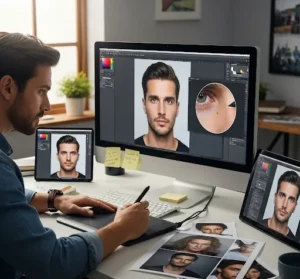 Manual editors have a keen eye for tiny flaws that AI tools often miss. Things like stray hairs, small dust spots, reflections, or uneven edges can easily go unnoticed by automated systems. Human editors carefully inspect each photo and correct these small imperfections without affecting the overall image. These small fixes make a big difference in the result, giving photos a polished and professional look. By paying attention to details, manual editors makes the image appears clean and natural.
Manual editors have a keen eye for tiny flaws that AI tools often miss. Things like stray hairs, small dust spots, reflections, or uneven edges can easily go unnoticed by automated systems. Human editors carefully inspect each photo and correct these small imperfections without affecting the overall image. These small fixes make a big difference in the result, giving photos a polished and professional look. By paying attention to details, manual editors makes the image appears clean and natural.
Tips for spotting tiny flaws:
- Zoom in to check edges, hair, and background details.
- Take a short break before final review to see mistakes more clearly.
- Compare the edited photo to the original to catch soft issues.
Manual Editors Adapt to Different Photo Styles
Manual editors are flexible and can adapt to different photo styles based on the project or client preference. If it’s a portrait, product shot, or landscape, they adjust their techniques to match the desired look. AI tools often follow preset patterns and may struggle with unique or creative styles. Manual editors can balance colors, lighting, and textures to maintain consistency while still achieving a specific style. Their ability to adjust makes sure that every photo fits the intended aesthetic.
Tips for adapting to photo styles:
- Discuss your style preferences clearly with your editor.
- Use reference images to guide the editing process.
- Learn basic editing techniques to tweak styles when needed.
Manual Editors Add Consistency Across Projects
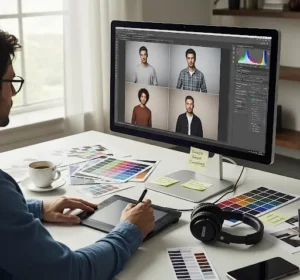 Manual editors consistency across multiple photos or an entire project, which is something AI tools often struggle with. They make sure colors, lighting, tones, and styles remain uniform from one image to the next. This is especially important for branding, product catalogs, or photo series where a cohesive look is required. By reviewing each photo carefully, manual editors maintain quality and avoid mismatched results. Their attention to detail makes sure that all images feel part of a single, polished collection.
Manual editors consistency across multiple photos or an entire project, which is something AI tools often struggle with. They make sure colors, lighting, tones, and styles remain uniform from one image to the next. This is especially important for branding, product catalogs, or photo series where a cohesive look is required. By reviewing each photo carefully, manual editors maintain quality and avoid mismatched results. Their attention to detail makes sure that all images feel part of a single, polished collection.
Tips for keeping consistency:
- Create a style guide or reference image for the project.
- Apply similar edits across all photos but adjust for small differences.
- Review the entire set together to spot inconsistencies.
Combine Skill and Experience for Quality Results
Manual editors bring years of skill and experience to every project, giving results that AI tools can’t match. They know how to handle different lighting, textures, and subjects to produce high-quality photos. Their expertise allows them to make judgment calls, fix tricky problems, and improve images in a way that looks natural and professional. Experience also helps them work efficiently without sacrificing quality. By combining technical skills with creative judgment, manual editors makes every photo meets a high standard.
Tips for achieving quality results:
- Learn from professional examples and practice regularly.
- Take time to understand the photo’s purpose before editing.
- Don’t rush the process, careful work produces better results.
Conclusion
Manual editors clearly bring a level of care, skill, and creativity that AI tools cannot fully match. From fixing colors accurately to perfecting skin, handling complex backgrounds, and making artistic choices, their work makes every photo looks polished and natural. Their ability to spot tiny flaws, adapt to different styles, and maintain consistency across projects makes them indispensable for high-quality results. If you’ve ever used AI tools, you might notice the difference when a human touch is applied. Which of these manual editing skills do you think makes the biggest impact on your photos? Share your thoughts or experiences in the comments, we’d love to hear your perspective.
Read Next: How to Use AI Editing Without Losing the Human Touch
